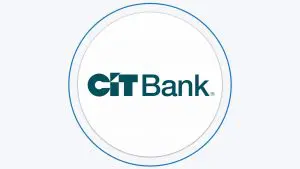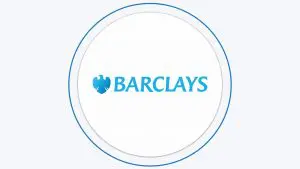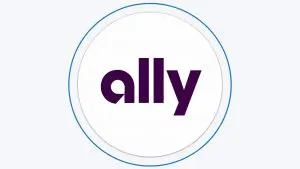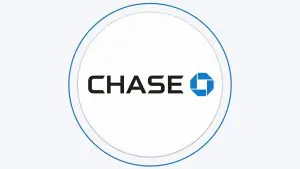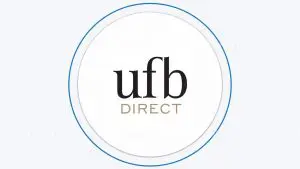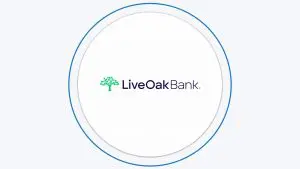Table Of Content
With the rising cost of living, there is a pressure to save more for retirement. This is reflected in the average value of retirement accounts by family. As you can see in the following chart using FED Survey of Consumer Finances data:
Existing in the rat race comes with its challenges. If you’re lucky enough to be in a job that you love, retirement may seem like a distant reality. Early retirement does not imply that you will quit working, but rather that you will have complete control over your time.
Of course, not everyone will have a say in the matter. Job loss, health issues, or family obligations can all derail even the best-laid retirement plans, causing people to leave the working earlier than planned.
However, if you're fortunate enough to be able to choose when you retire, it's important considering the benefits and drawbacks before making any decisions. Even if you have the financial means to retire early, you may not want to.
If you dream of walking out of your workplace for the last time and can’t wait to have some ‘you’ time to enjoy all the things you love, it's important to take steps now to make that a reality.
1. Start Early
It’s never too early to start planning for retirement, in fact, the earlier, the better. With retirement age ever increasing many people are expected to work well into their 70s. For some this isn’t ideal, and understandably so.
No one wants to rely entirely upon a state pension, so it's useful to investigate retirement savings accounts early on to ensure you have additional options. Use a price comparison website to find cost-effective saving accounts and identify the ones with the best rate. Investing in your retirement will always have an element of risk, so it's important you don't make decisions quickly and choose plans with minimal risk.
Paying into a retirement as soon as you are at working age will mean over the years' money accumulates and If you're careful and thrifty with your finances by the time you reach retirement age (or before) you will have enough money to enjoy the things that you love maybe even visiting countries you always wanted to see without the worry of financial burden.
Financial assets provide security, but as this chart using FED Survey of Consumer Finances shows, the average financial assets increases as consumers age. The under 35s age group has an average of $35,000 in assets. This suggests that the under 35s may still be burdened by lower income jobs and student debt.
There is a significant increase in assets between this group and the 35 to 44 age group. After this point, there is a steady increase in assets until retirement.
401(k) vs. IRA: What's The Difference?
One of the most essential financial goals we must attain in our lives is saving for retirement. Which retirement savings account to choose can assist you in achieving that objective. The benefits of these accounts can help ensure that you have enough money to live on in your senior years, whether it's a 401(k) supplied by an employer or an individual retirement account (IRA) that you set up on your own.
Employers may provide participation in a defined-contribution plan, such as a 401(k), to give their employees a tax-advantaged opportunity to save for retirement . Employees often contribute a percentage of their pay to a 401(k), with the employer matching contributions up to a certain amount. Individuals can start an IRA and save on their own. Employer matching contributions are not available with IRAs. IRAs exist in a variety of shapes and sizes, each with its own set of income and contribution restrictions as well as tax advantages.
Both IRAs and 401(k)s grow tax-free, which means the interest and gains are not taxed over time. In retirement, however, distributions or withdrawals from these assets are usually taxed at your current income tax rate. IRAs, on the other hand, allow for tax-free withdrawals in retirement. Furthermore, most IRAs and 401(k)s do not enable withdrawals until the account owner reaches the age of 59.5;
2. Planning
When it comes to planning finances, it's important to sit down and run through numbers to get a realistic idea of how much you can put away. Ask yourself questions such as how much do I want to invest now in order to get to a level that I can enjoy in the future.?
It's useful to write everything down and create a spreadsheet of the money you have coming in, how much is left over, and how much you want to invest in the future. Utilizing companies such as CreditNinja will help you gather all of your financial information in one place and enable you to calculate how much you need when you retire and assist you in making a plan.
If all the options seem overwhelming, make an appointment to see a financial advisor. He can advise where to invest your money for the best return. Alternatively, they can help you decide which investment option is right for you and your circumstances.
For example, investing in the stock exchange holds minimum risk and could be a lucrative option. Investigating all the options will help you make a calculated choice about where to put your money and how to make it work for you. Investing appropriately now means that over the years you will build up a nice little nest egg that you can enjoy during your retirement years.
Can You Achieve a Financial Independence?
When planning early retirement, it's important to aim for financial independence. You don't need to be rich, however, it's important to establish if you have enough money to cover all your costs and have enough left over to enjoy yourself. To plan successfully, you need to create a budget and stick to it. How do you do that and still enjoy life?
Consider what kind of work you'd enjoy doing in retirement during your retirement planning process. Take the time to look into your choices. Knowing that you have retirement income options might help reduce fears of outliving your savings or discomfort at the prospect of actually using the assets you've collected over a lifetime.
It's important during the working years to remember that much of your future retirement will come from your employment. The longer you stay in a job, the more money will be paid into your retirement plan by yourself and your employer. Try to bear this in mind when tempted to move jobs. It's difficult to build a decent retirement plan when jumping from one job to another.
3. Budget
It's true to say it can be tricky creating a budget with the price of living on the rise but it's important to live within your means. It's crucial not to get into debt, as this can be highly detrimental to your saving plans. If you do have debts, then paying them off should be a priority. Paying off your mortgage is an important way to release money for future retirement. Mortgage payments are a substantial part of monthly outgoings and by eliminating this you free up funds to invest elsewhere.
When creating a budget, make sure you don't leave yourself short. Calculate your monthly outgoing compared to your income and don't forget to save for fun things to enjoy now. It’s useful to separate saving pots, so you know what each pot is that you're saving for. If you decide to save money outside a retirement plan, be sure to put the money in an account that requires notice to help avoid the temptation of dipping into it.
Try not to Save so rigidly that there is nothing left over for emergencies and the fun stuff. Try to approach saving in a balanced way and allow for flexibility. Another consideration when saving for the future is calculating enough money to cover medical bills should you suffer any age related illnesses. It's useful to create an extra account to allow for any medical bills due to disease or accident.
Savings are a crucial part of financial stability. Whether you have an emergency fund or investment funds, savings can provide security against unforeseen events or situations. As you can see in this chart using FED Survey of Consumer Finances data, Americans are saving more.
Here are top 3 budgeting methods:
Traditional Budget
Even if you don't use a budget spreadsheet, you'll need a way to keep track of where your money goes each month. Using a template to create a budget might help you gain control over your finances and save money for your goals.
The key is to find a method of keeping track of your finances that works for you. Identifying the amount of money you have coming in is the first step in developing a budget. Keep in mind, though, that if you think of your overall pay as what you have to spend, it's easy to overestimate what you can afford. It's a good idea to keep track of and categorize your expenditures so you can see where you can cut back.
This can help you figure out where you spend the most money and where you can save the most money. Make a list of all the financial goals you want to achieve in the short and long term before you start sorting through the data you've collected.
Short-term goals should be completed in less than a year. Long-term goals, such as retirement savings or your child's education, might take years to achieve. After you've completed all of this, you'll have everything you need to finish your budget. You can start to see where you have money left over or where you can cut back so that you have money to put toward your goals now that you've documented your income and spending.
50/30/20 Budget
The 50/30/20 rule of thumb is a method of allocating your money to three categories: needs, wants, and financial objectives. It's not a hard-and-fast rule, but rather a general guideline to help you create a healthy financial plan.
The 50/30/20 rule of thumb is a budgeting guideline that allocates 50% of your budget to “needs,” 30% to “wants,” and 20% to your financial objectives. Depending on your unique circumstances, you may need to change your percentages.
Zero-Sum Budget
A zero-sum budget demands you to “give each dollar a job” by spending every dollar you make on paper. After all bills, spending, and investment have been paid, the checking account balance will be close to zero at the end of the month. After that, you begin the following month with a new spending plan and a clean slate.
With a zero-sum budget, you prepare for normal payments, savings, and investment goals and pay them all as if they were mandatory. You pay your power bill and mortgage as usual, but you also make payments to your savings and investment accounts as if they were bills.
4. Mindset
It takes determination and a strong mind to make a budget and stick to it. When apportioning money to savings, try not to lose sight of the bigger picture. It's tempting to dip into savings when you want a treat or fancy an extra holiday, but remaining focused on building a decent nest egg will help you resist the urge and stick to a budget.
During the working years, we are focused on accumulating money. However thrifty you think you are when it comes to financial planning, with no more workable income you must be diligent with spending. Establish exactly how much you have to cover all your bills and enjoy the rest of your life. You need to be very disciplined to ensure that you do not run out of money during your twilight years.
Bottom Line
Retiring early is certainly something to look forward to. With the right planning, a realistic budget and a positive mindset, you can make that dream a reality if you start early. Don't forget to enjoy life now, as you never know what's around the corner!
This is a guest post written by Hazel Holmes, marketing partner of CreditNinja. Hazel's goal is to take part in this movement to educate and provide you with financial knowledge in order to navigate your way through unplanned expenses.





